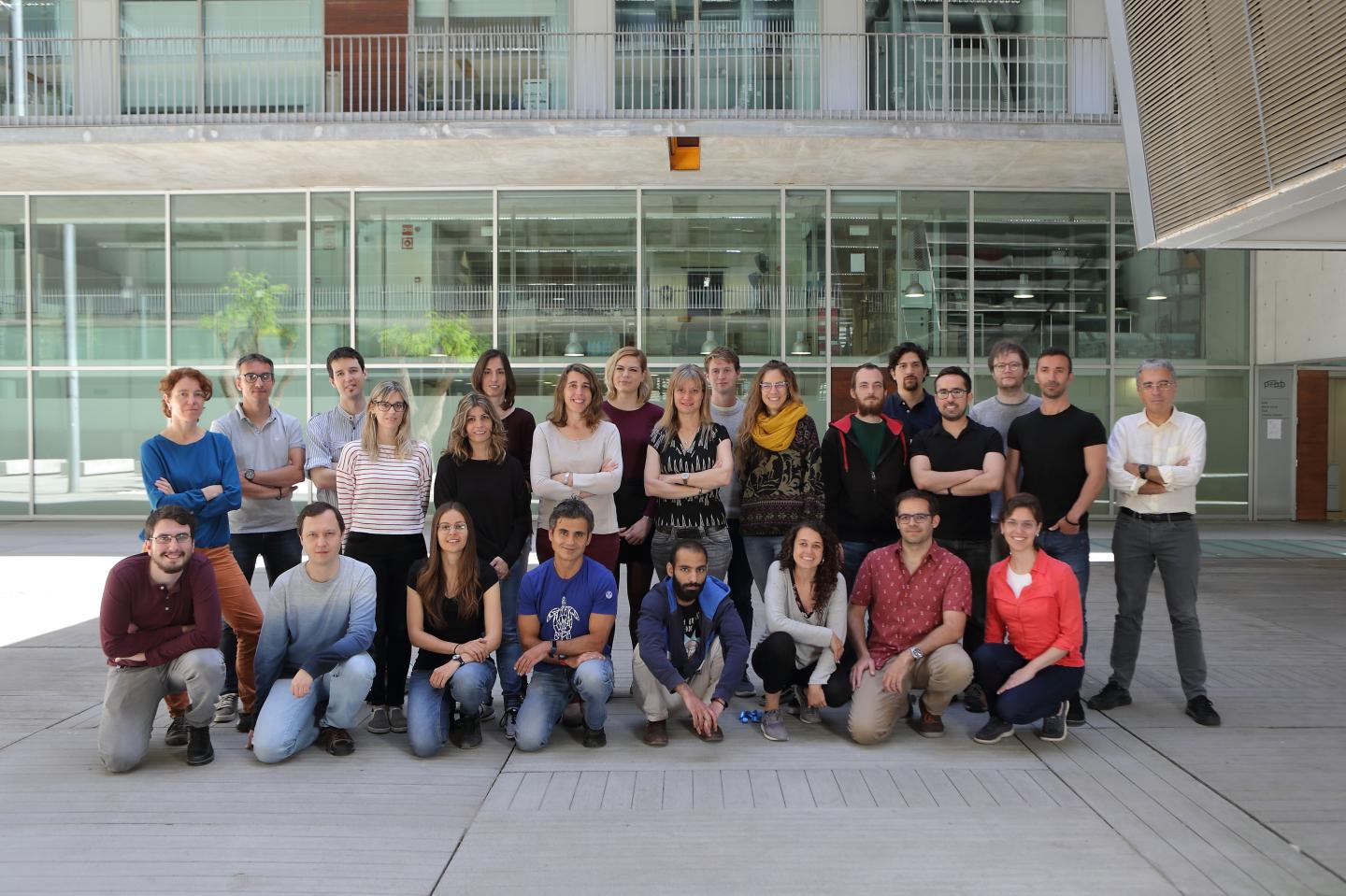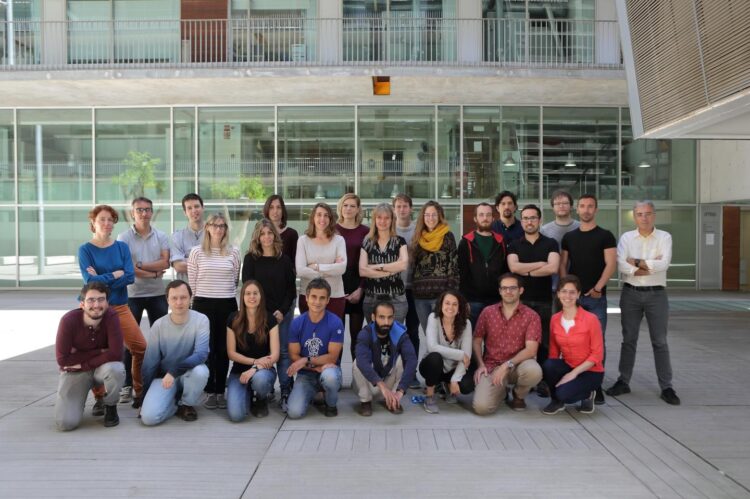
Credit: © CRG 2019. All rights reserved.
A study published today in Science reveals that biological sex has a small but ubiquitous influence on gene expression in almost every type of human tissue. Genes found to be expressed at different levels in adult males and females are involved in many different biological processes, including response to medication, control of blood sugar level in pregnancy, and cancer.
The study is part of a set of papers (4 in Science, 1 in Cell and 8 in other journals) published by the Genotype-Tissue Expression (GTEx) Consortium, which are the culmination of a 10-year-effort funded by the National Institutes of Health (NIH). GTEx project is an ongoing international effort to build a comprehensive public resource to study tissue-specific gene expression and regulation.
Sex has a weaker but important effect on the genetic contribution to gene regulation, with the researchers discovering previously unreported links between genes and complex traits, including birth weight and percentage of body fat. Therefore, these discoveries suggest the importance of considering sex as a biological variable in human genetics and genomics studies. If specific genes or genetic variants contribute differentially to a given trait in males and females, it could suggest sex-specific (or differentiated) biomarkers, therapeutics, drug dosing, etc. In the future, such knowledge may form a critical component of personalized medicine or may reveal disease biology that remains obscured when considering males and females as a single group.
Sex differences have been previously attributed to hormones, sex chromosomes, and differences in behavior and environmental exposures, but the molecular mechanisms and underlying biology remain largely unknown.
In this study lead by Barbara E. Stranger from the University of Chicago, and Northwestern University, both in Illinois, researchers from the Centre for Genomic Regulation (CRG), in the group of Roderic Guigó, the Sant Pau Biomedical Research Institute, the University of Barcelona, and other centers world-wide, investigated sex differences in the transcriptome, which is the sum of all RNA transcripts in a cell, across 44 types of healthy human tissue from 838 individuals.
“Our work is a catalog of sex-differentiated effects across the human transcriptome that can serve as a reference when performing further analyses to explore the role of sex in biology,” says Manuel Muñoz-Aguirre, co-first author and researcher at the Centre for Genomic Regulation. “We believe this work can be helpful for researchers seeking to assess sex biases in disease, which could ultimately translate into clinical practice.”
Sex differences in gene expression were reported in at least one type of tissue for over a third of all human genes (37%). Although abundant, the sex effects on gene expression were mostly small. The number of sex-biased genes and their effect sizes were not dominated by either sex.
Sex-biased genes represented diverse molecular and biological functions, including genes relevant to disease and clinical phenotypes, many of which had not been previously associated with sex differences at a molecular level. For example, the gene CYP450, linked to human drug metabolism in liver, was found to be sex-differentially expressed across multiple tissues. Genes targeted by the H3K27me3 epigenetic mark, linked to sex-biased secretion of pituitary growth hormone and placental development, were also sex-differentially expressed across multiple tissues.
The researchers also studied the genetic regulation of gene expression. Here they found much less of an impact of sex, with the majority of discovered effects observed in breast tissue, followed by muscle, skin and adipose tissue. When cross-referencing this data with results from 87 GWAS studies representing 74 different complex traits, the researchers found 58 gene-trait links that would have been missed with sex-agnostic analyses, highlighting the importance of considering sex as a biological variable in genomic analyses.
“These results suggest that sex differences in human complex traits might derive, in part, from sex differences in gene regulation. In the future, this knowledge may contribute to personalized medicine, where we consider biological sex as one of the relevant components of an individual’s characteristics”, declares Barbara E. Stranger, main author of the study at Northwestern University, Chicago.
In women, the genetic regulation of CCDC88 is strongly associated with the progression of breast cancer, and HKDC1 with birth weight, possibly by altering glucose metabolism in the liver of a pregnant woman. In men, genetic regulation of DPYSL4 was associated with body fat percentage and CLDN7 with birth weight. The researchers also identified a link between an uncharacterized gene, C9orf66, and male pattern balding.
“Our study reveals gene-trait links that would have been missed with sex-agnostic analyses, highlighting the importance of considering sex as a biological variable in genomic analyses. In a forthcoming future, we anticipate that novel, sex-aware single cell transcriptome approaches may play an important role in disentangling sex effects on the transcriptome even further”, says Meritxell Oliva, co-first author of the study at The University of Chicago, and former researcher at the Centre for Genomic Regulation.
Importantly, the researchers note that despite the discovery of extensive sex differences at the transcriptome level, these effects were small and the male and female distributions overlapped. Indeed, they note that the majority of biology at all phenotype levels is shared between males and females. They also note that the study has several limitations. The findings are based on a snapshot of mostly older individuals. The analysis also does not account for sex differences that occur during different developmental stages, in specific environments, or in specific disease states.
The CRG authors of this paper also contributed to two other papers of the set published today by the GTEx Consortium. In the main GTEx paper published by the GTEx consortium, and another manuscript, cell type composition was identified as a key factor to understand gene regulatory mechanisms in human tissues. GTEx researchers found that the abundance of each cell type in human tissues is linked to specific genome traits. CRG researchers have contributed to these articles by testing statistical methods to identify the presence of specific cell types in tissues based on gene expression.
###
Media Contact
Gloria Lligadas Peñarrubia
[email protected]
Related Journal Article
http://dx.





